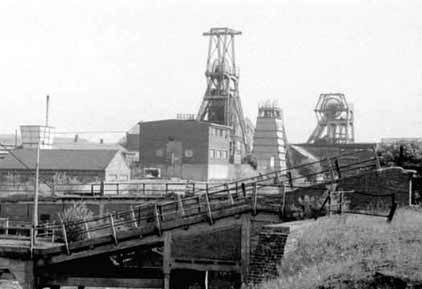|
|
 |
|||
|
More than twenty persons were killed, including William, and several injured by an explosion, which occurred about 3.15, am. on the 7th Feb 1881, at the Whitfield Colliery of the Chatterley Iron & Coal Company, near Hanley, North Staffordshire. At the inquiry on the 14th June, Mr. Whynne, HM Inspector, said; "When the manager of this colliery introduced the notion of having a forge in the pit, he ought to have taken extraordinary care himself that no danger could arise from it, as most likely no one else had ever seen a forge in a pit and would not see the danger that experienced persons would at once perceive; and I am bound to say, that had my attention been called to the matter, I would have protested against so dangerous an innovation. The coroner in his summing up to the jury said: “I shall have to direct you to take into your consideration the fact that you are only sitting here to inquire into the death of three men, one of them being a man named Samuel Vickers, who at the time of the explosion was at the bottom of the shaft, and the other two being John Thompson, the manager's son and Henry Boulton, who were in the cage for the purpose of descending, at the time of the explosion. So that you will only have to consider the evidence so far as it bears upon the death of those three men. I knew from a memorial roll of miners killed at work that one was William but I could not find a death registered for him. John Lumsdon, a retired miner who researched the above information, has told me William was 19 when he died in this explosion. I was then able to deduce he was William Thomas whose birth was registered in the Medway district of Kent in 1862. Why Kent, a long way from Staffordshire? In May 1855 Joseph married Mercy CHAMPNESS at St Paul’s Chatham, Kent. His residence was given as Kidsgrove and hers as Chatham Hill [her father was a Labourer]. They and two of William’s siblings were living in Norton in the Moors, Staffordshire in the 1881 census; Joseph must have had a heavy heart when he filled in that form without William on it, just two months after his death. Joseph, born 1828 to Joseph and Ann in Rode Cheshire, on the border with Staffordshire, was a Forge Puddler in 1881 and in 1851 before he married, his parents he and three siblings were living in Whitehill, Kidsgrove . William’s grandfather Joseph also worked in a Forge and he was born about 1791 in Odd Rode [Roade on the census page] whilst grandmother Ann came from “Lawton”, presumably Church Lawton, nearby. I do not know who Joseph’s parents were nor who he married; a possibility is that she was Ann OWEN and they were married in 1820 at Astbury. Going on the children’s ages and birthplaces, the family moved from Rode to Kidsgrove between 1839 and 1845. John Lumsden’s pages and many more stories about Mining are on Fionn Taylor’s site at http://www.healeyhero.co.uk . The pages for the 1881 explosion account start at http://www.healeyhero.co.uk/rescue/reminise/whitfield.htm . The report in the Times of February 8th states that after a fire had started the men in the pit were withdrawn, because their attempts to extinguish it were not successful. However other men were then sent down to try again and to rescue several horses. It was only then that the fire ignited gas, causing the explosion which was heard several miles away. Therefore it seems that William and the others were sent down into an already particularly dangerous environment. A link from the above site leads to Ian Winstanley’s pages which include lists of other disasters in which miners were killed and injured. He has told me about three more Gidman fatalities:- James a loader, 20 and Daniel a collier, 24 died around 26th August 1904 in a fire lasting several days at Sneyd Colliery caused by a faulty safety lamp. In the 1901 census for Staffordshire, James aged 17 and his brother Daniel, 21, were living at Bradeley, Smallthorne. Three of their four brothers were also miners - Joseph, Ellis and Walter. Their mother was Emma and their father Joseph; he had a “chip potato business” although in 1881 he was an Iron Puddler. Joseph was baptised in Wolstanton on 1st April 1855 to Daniel and Hannah [who I think is incorrectly shown as Emma in the 1851 census]. Daniel married Hannah LONGSHAW in 1843 at Christ Church, Tunstall and these are the parents named when Joseph died in Australia in 1928. A Joseph died on 12th May 1941 at Chatterley Whitfield, run over by a wagon He was 63, the right age to be the brother in the same family. [Two other miners in that census with the same names are James, 52, at 62 Alma St. Fenton and Daniel,17, living in Old Whitehill, Newchapel.]
|
| [Home] [Our name] [Where they lived] [Thomas d 1707] [Censuses 1841 - 1871] [1881 UK Census] [1891 & 1901 census] [1911 Census] [Emigration] [Forenames] [Marriages] [Deaths] [Miners] [World War 1] [Knutsford] [Directories] [John 1814 - 1890] |